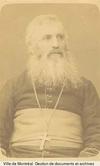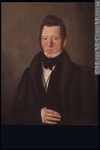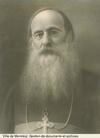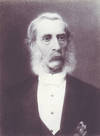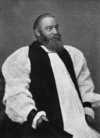THANADELTHUR, a Chipewyan (Northern Indian) known as the Slave Woman in the records of the HBC; the Indian name
title of “the Moses of the Chipewyan.” He travelled enormous distances to the camps of the Chipewyan known as Caribou Eaters, which spread north to the Barrens, and he also ministered to the southern
MATONABBEE, leading Indian; b. c. 1737 of Chipewyan parents at Prince of Wales’s Fort (Churchill, Man.); d
Hudson Bay from the Eastmain River to York Fort, and the Chipewyan or Northern Indians, just out of range of regular European contact in their country northwest of Churchill River. The Chipewyans lack of
AW-GEE-NAH (English Chief), Chipewyan chief; fl. 1771–1821.
Little is known
fulfil his promise, given by the HBC explorer William Stuart to the Chipewyan Indians, to start trading at
1824 at Genoa, Italy, son of Jacques Eynard and Marie-Anne-Agathe Lévêque, who came originally from Embrun (department of Hautes-Alpes), France; d. 6 Aug. 1873 at Fort Chipewyan, N.-W.T
to La Nativité mission at Fort Chipewyan (Alta). Clut served there from 1858 to 1869, also ministering to the Chipewyan called Caribou Eaters at the eastern end of Lake Athabasca. His life was
McLeod, he was transferred in 1822 to the Athabasca district and accompanied Simpson that autumn from York Factory (Man.) to Fort Chipewyan (Alta). The governor appraised him as a “decent young
*. His descriptions of the Beaver (Slave) and Long-Arrowed (Hare) Indians are literate and detailed.
From 1816 to 1821 Keith served at Fort Chipewyan
Chipewyan. His first winter command was at Fort Resolution, on Great Slave Lake, from 1819 to 1823. With the amalgamation of the fur-trading companies in 1821, McVicar became a chief trader. He gave
, which he completed at Fort Chipewyan (Alta). He made his final vows at Providence mission (Fort Providence, N.W.T.) on 21 Nov. 1863 before his cousin Bishop Vital-Justin
.
Lefroy and his assistant took magnetic observations at more than 300 stations. While wintering at Fort Chipewyan (Alta) they took observations every hour from 16 Oct. 1843 to 29 Feb. 1844, and
Knight* intended to establish a new post for trading with the distant Chipewyan or Northern Indians. A party of these Indians had already arrived to trade however and had turned homewards disappointed
North West Company and was posted to the Athabasca Department and then to the Mackenzie River District, being stationed at Fort Chipewyan and at posts on the Mackenzie River and north of Great Slave Lake
in the Athabasca department. The journals he kept at Fort Chipewyan (Alta) in 1799–1800 illuminate the harshness of life in the fur trade; they also reveal his contempt for Canadians, Indians, and the
qualified.”
The good returns McKenzie was able to maintain during his early years at Île-à-la-Crosse began to fall off in the early 1840s as the Chipewyan
, as he can put up with any sort of living, that is in eating and drinking.” Fidler spent mid January to mid April 1791 with Chipewyans north of Île-à-la-Crosse (Sask.) and after reaching the Athabasca
, with seaman John Hepburn*, advanced to Fort Chipewyan (Alta) on Lake Athabasca in January 1820. Hood and Richardson remained behind to study
linguist, he was not only fluent in Cree but also acquired a working knowledge of Ojibwa, Inuktitut, Chipewyan, and Norwegian – the last because the HBC had several Norwegian employees at Moose in the


